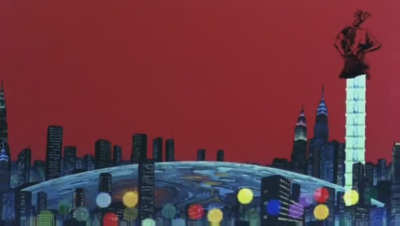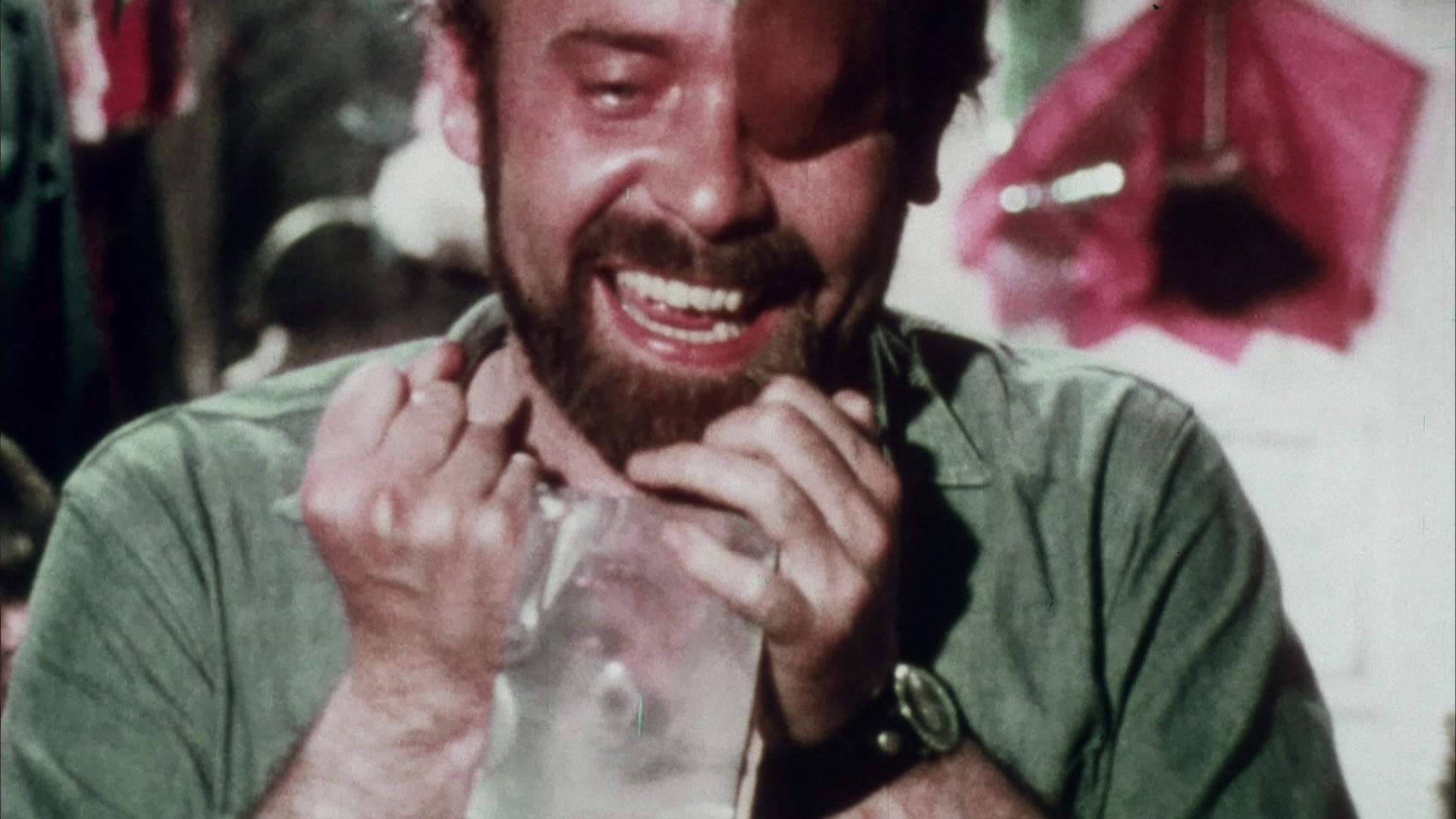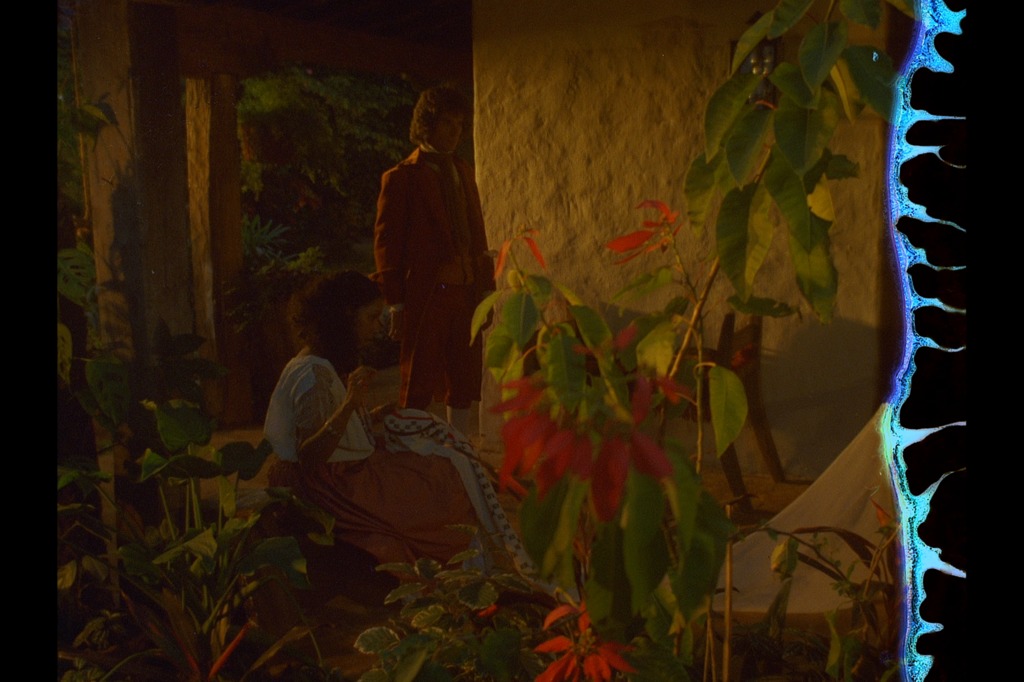 |
| From https://alchetron.com/cdn/Ai-City-images- a594a038-f0d7-414c-9069-d0b29316427.jpg |
Director: Kōichi Mashimo
Screenplay: Hideki Sonoda
Based on the manga by SYUFO (Shuuhou Itahashi)
(Voice) Cast: Hirotaka Suzuoki as Kei; Yuki Ueda as Ai; Mami Koyama as K2; Banjou Ginga as Ii; Ichirō Nagai as Rai Ro Chin; Issei Futamata as Ryan; Jouji Yanami as Ti; Kenyuu Horiuchi as Mister J; Kiyoshi Kobayashi as Kuu Ragua Lee; Nachi Nozawa as Raiden; Seiko Nakano as S; Takeshi Watabe as Aroi
Synopsis: In a futuristic metropolis, a man named Kei, a young girl named Ai, a detective named Raiden and a cat are fleeing from a motorbike gang. Kei was a test subject, for the evil corporation FRAUD, for telekinetic powers as Ai was; their story becomes even more complicated as allegiances switch, FRAUD falls into violent infighting, and that there's the question of what and who Ai actually is.
Warning, this review will spoil a lot, but even then unravelling Ai City will not prepare one for actually watching the anime feature film. Most of the review will just be trying to untangle said plot - I understood most of Ai City, not an attempt at having an ego, but that I have learnt from seeing so many of these films which slip into vague connections to link the dots together. (And listened to the right podcasts/articles that try to explain the plot). Ai City, "loosely" based on the manga by Shuuhou Itahashi, is a film between its unconventional plot structure and erratic pacing of plotting that is put together to be much more difficult than it should've been, to the point it's gleefully weird. Also it just has weird content, else how do you explain a comedic side character cat who seems to have wandered from a children's cartoon in the midst of this proto- (or slightly off smelling) cousin of Akira (1988)?
That this film was only released two years before Akira, which broke into the West and properly introduced anime so that someone like myself is here writing this review in the first place, is significant as for a period in anime and manga's history it had an obsession with ESP and psychic powers. Possibly influenced by Uri Geller, every piece of cutlery's greatest nightmare, and to the general obsession with fortean culture that especially came from the late sixties and seventies, at least with the existence of Genma Wars (1967-9), the collaboration between sci-fi author Kazumasa Hirai and the legendary Shotaro Ishinomori which was adapted into the infamous 1983 feature length animation. Whatever the case it became an obsession for the industry: even Mobile Suit Gundam (1979-1980), a giant robot show that became an institutional franchise to this day, had to have psychics in its plot eventually; even a romantic comedy, the Kimagure Orange Road franchise, had psychics in it. Even the legendary musical groups Sparks had plans to turn Mai the Psychic Girl, a 1986 manga, into a musical that Tim Burton has interest in adapting into film. Ai City is another member of this fad, when psychics were big as a plot point, the inevitable weird one.
Kei, as is described in a very descriptive song halfway through, is a man with super psychic powers fighting for good, kidnapped alongside his girlfriend for experiments by a group named FRAUD; she dies, he is deemed defective and only useful for laundry duties, only for the inappropriate cartoon cat (who can't talk, but walks on hind legs and interacts with everyone) to reveal that his girlfriend was cloned, now a seven year old with incredibly powerful abilities. Certainly she's part of a power play between FRAUD's leader Kuu Ragua Lee, helped by minions including cloned female beaus and artificially constructed men, and Lee's former colleague Lai Lou Chin, probably the strangest character as he is literally a tiny little old man in a jar, in water, on top of a robot body who's psychic ability is so strong he can conjure up stone floating heads that swarm the city.
 |
| From https://fpscinema.files.wordpress.com/ 2010/12/vlcsnap-3865591.png |
Ai City's difficulty is not from how dense the plot threads are, but how the story is told. A lot is in the abrupt flashbacks and a lot of exposition that feels out of place, eventually starting to get into ill defined details like past lives, a DNA evolutionary monster and an abrupt crow barring of what the title "Ai City" actually refers to. Other details are just unpredictable, weirdness of this specific eighties era of anime. The cat, a fully fledged character who eventually gets his own set of clothes and is a figure of importance plot wise, behind machinations and even responsible (with glowing yellow eyes) in causing Ai to remember a password randomly. Or K2, a former enemy who is blasted so hard with psychic power both all her clothes and the fabric of existed are blown away, propelled through reality itself as if a theatre stage cloth ripped asunder, losing her memories and becomes a heroine, entering a flirtatious relationship with detective Raiden, another character, and wearing a Playboy bunny outfit, even getting her memories back and getting in an awkward respect scenario with a henchman she is now against when she kills someone on his side. Material like this, or the relationship itself with Kei and Ai now, despite being once his girlfriend, she calls him her "papa" and take on a paternal one with all the creepy connotations there by accident, just adds to the strange collage that you have onscreen. Even in terms of the depiction of psychic powers, Ai City is unique in how, to depict the psychics being different, they have digital number gauges appear on their foreheads mid-use, the numbers for each power varying randomly depending on what's done.
It's all incredibly irrational, incredibly random, but also magnificently compelling and at times gorgeous to look at, the most eighties of anime in aesthetic style with moments of incredible experimentation. Even with an oblivious idea of why a metropolis this sprawling has few bystanders barring one scene, there's still a multicoloured spectacle as a result. It sadly wasn't a title Manga Entertainment added to their old DVD re-releases, a shame as its not only a cut above in craft (barring some wonky moments), but would've been the perfect representation of that delirious breed of anime churned out from the period, with all the tropes I love. The fabric of time is literally ripped, only to be fixed as if a traffic incident, whilst Lai Lou Chin is powerful enough to not only brainwash people but also release those aforementioned giant heads, big enough for anyone to ride on. The best way to approach this film, as I did, is to never attempt to figure out the whole plot, aware that a lot of it was probably improvised; it's not as difficult to grasp as it first appears as a result, but just mixed with wild tangents.
And yes, MAJOR SPOILERS HERE, it gets weirder when the film collapses into forgotten memories, a battle in a phantom realm with a horrifying mass of DNA that feels nonetheless illogical, and the plot being told as a Möbius strip which repeats itself from the beginning. Even admitting that doesn't spoil how this happens, as that in itself in its abruptness befits the work. And this is in mind of who made Ai City. Director Kōichi Mashimo is a prolific figure - the next year after this, he also helmed Dirty Pair: Project Eden (!987), a beloved entry in that famous franchise that was seen as an incredible piece of animation just in the opening credits alone, and he has cut work like The Irresponsible Captain Tylor (1993) before he founded Bee Train, a divisive studio behind titles like Noir (2000). Knowing something this bizarre may have been just another day in the office for him, alongside his more famous production for the next year, just adds to the madness.
Eventually the psychic genre ebbed away, befittingly with Akira when it helped anime reach the West feeling like the zenith. But it at least released this oddity too, even if questions have to be asked what they were thinking.
Abstract Spectrum: Bizarre/Mindbender/Psychedelic/Surreal
Abstract Rating (High/Medium/Low/None): Medium
Personal Opinion:
Ai City, as obscure as you can get from the eighties anime boom, definitely feels like it could only have been made in that era. Something utterly perplexing yet energised as a mad, colourful head-trip.
 |
| From https://66.media.tumblr.com/339a9289eb4e15da3dfc 1f69b538481a/tumblr_mptfnunnxg1r7k0eco1_400.jpg |







_Episode_Level_3_Random_Encounter.JPG/revision/latest?cb=20130728141857)










